
Why food freezes in your refrigerator — and how to stop it
Have you ever put milk, eggs, fruit, vegetables, meat or other items into your refrigerator, only to discover that your fridge is freezing food? While this problem is somewhat rare, it can happen—and when it does, you’re left with food that is ruined or needs to be thawed. If you need help preventing this issue, this guide can help provide possible solutions.
Why is my refrigerator freezing everything?
Food freezing in the fridge can be triggered by a handful of causes, including a faulty temperature sensor, blocked air vents, a leaky door seal and more.
A refrigerator is designed to keep food cool for safe storage and should not freeze anything. If you notice that your food freezes in the refrigerator, there are simple steps you can take to troubleshoot and try to resolve the issue.

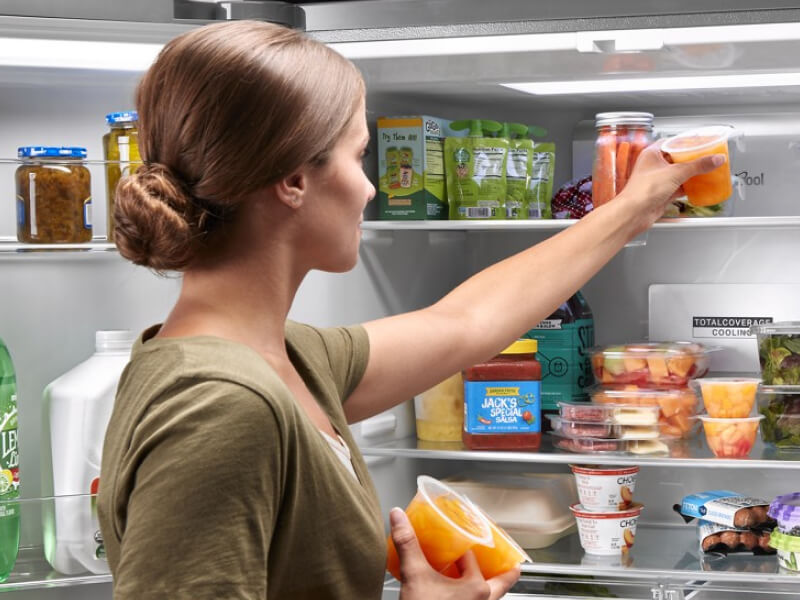
How to keep your refrigerator from freezing food
If your fridge isn’t functioning properly and food freezes in the refrigerator instead of just staying cool, you may initially think that it needs to be replaced or repaired. However, there are a few reasons why this may be happening, like faulty sensors, blocked air vents or the ice maker’s settings.
Sometimes, the solution to stop your fridge from freezing can be solved with a few easy steps. Troubleshoot your way through the topics below to try to find out what’s causing your refrigerator to freeze foods and how to address it.


1. Temperature settings set too low
The optimum refrigerator temperature range for storing fresh food is about 37°F, which is the temperature at which many fridges are factory set—however a range of 33-40°F is generally considered okay, but food may freeze if your fridge is colder than that. If your food is freezing, then it is possible that your fridge’s temperature setting was accidentally set too low. This is a common problem that can lead to your refrigerator freezing food.
Reset your refrigerator’s temperature
If your refrigerator is too cold, locate the temperature controls and adjust them accordingly. Not sure which temperature is correct? Consult your user guide or owner’s manual.
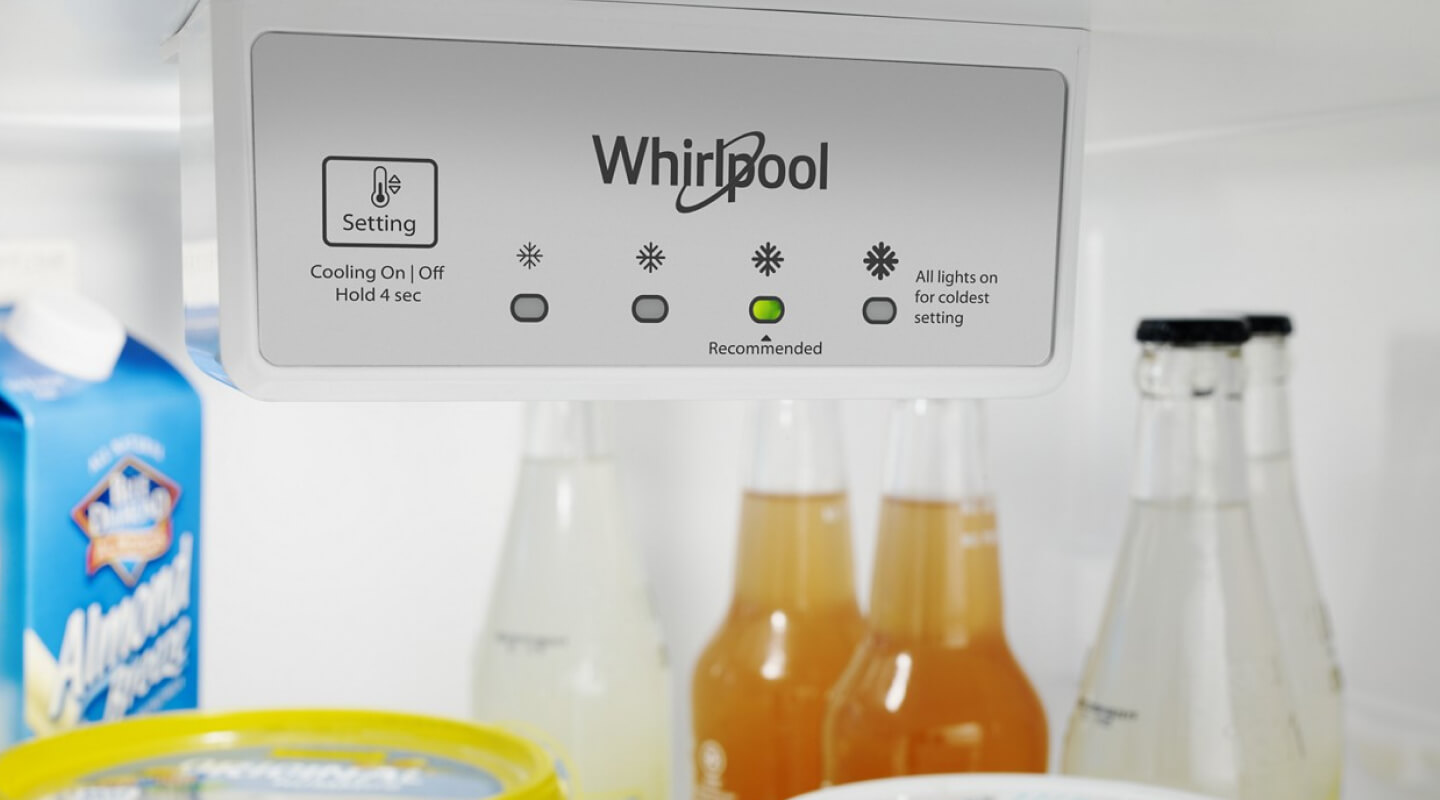

2. Faulty temperature sensor
You may find that your refrigerator is set at an ideal setting for cooling foods, but your temperature sensor could be off. You may need to consult a professional for assistance.
Manually test your fridge’s temperature
To manually check your refrigerator's temperature, place a glass of water on the top shelf of your refrigerator for 24 hours. Remove the glass and test the water temperature with a cooking thermometer. If the thermometer reading isn't within 2 degrees of your appliance’s set temperature, or the recommended temperature range, your refrigerator’s temperature sensor may be faulty and in need of replacing.

Whirlpool® 4 Door Refrigerators
Flexibility for the whole family
Flexible organization spaces make it easy to store your family’s favorites, from frozen meals to healthy snacks


3. Blocked air vents
Refrigerators use air vents to circulate cold air and ensure a consistent temperature throughout the storage area. In order to ensure the proper temperature, you need to allow room for proper airflow between the freezer and refrigerator compartments. If food is blocking these air vents, it will be exposed to more cold air and may freeze over time. (Blocked vents can also make it harder for your freezer to maintain its temperature.)
Rearrange your food
Make sure the food in your refrigerator isn’t touching any of the air vents. You can also try to distribute food more evenly throughout the refrigerator. To learn more about how to store food in your refrigerator, check out this refrigerator organization guide.

Learn more about organizing your refrigerator

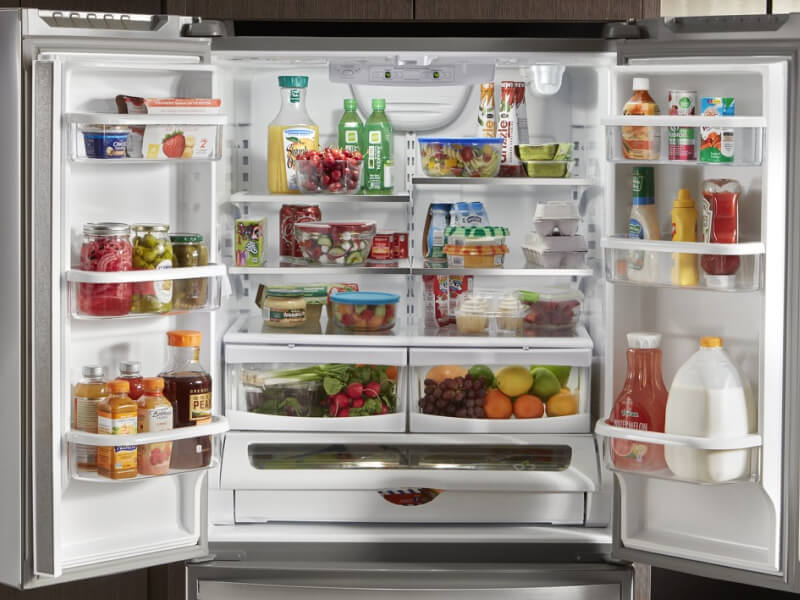
4. Leaky door seals
The seals around your refrigerator and freezer doors help keep cold air in. If one or both of these seals are leaking, your refrigerator will work harder to maintain a constant temperature. Unfortunately, this can lead to frozen food and a refrigerator that’s too cold.
Check your refrigerator’s door gasket
If you suspect that your refrigerator’s doors may be leaking, take some time to clean and inspect the door seals. If they are torn, warped or worn, replace them immediately. You may be able to keep your refrigerator from freezing food and save energy as well with these replacement parts from Whirlpool brand.


5. Ice maker overcooling
A refrigerator ice maker being put to good use shouldn’t cause freezing in the refrigerator compartment, but a dormant ice maker may be a problem. An ice maker that’s left on but disconnected from the water supply can cause the compartment to cool to freezing temperatures as it continually tries and fails to make ice.
Adjust ice maker settings
If you don’t plan to use your ice maker, then turning it off may help prevent overcooling in the refrigerator. Most refrigerator ice makers can be turned off by flipping an on/off switch located near the ice maker or by lifting the metal feeler arm up and into the off position. If your refrigerator features a touchscreen menu, you may need to navigate through its settings to turn off your ice maker. Check your user manual for more precise instructions.
6. Dirty condenser coils
Condenser coils in a refrigerator work to keep the fridge compartment cool. However, if these coils are dirty or become coated with dust, the fridge may need to work harder to maintain the temperature—resulting in your fridge freezing food. However, it may be hard to notice this issue, as the coils can be difficult to access.
Clean the condenser coils
Reference your owner’s manual to see if there is any information specific to your model on cleaning your refrigerator and your model’s condenser coils. Some models don’t require cleaning, while still others require a professional to do it. Your manual may be able to help you identify where the condenser coils are in the fridge and whether or not you can access them.
If your coils don’t require professional cleaning, but can be cleaned, start by unplugging your refrigerator and locating the coils. Many coils are located behind a grille at the base of your refrigerator. Gently brush or vacuum the coils and the surface areas to remove any buildup. Once the coils are cleaned, replace the grille and plug your refrigerator back in. How often you need to clean the condenser coils depends on the environment in your kitchen, like the amount of grease, dust or pet traffic in your home.


Why is my fridge freezing up at the back?
In instances of your fridge freezing up, many people notice it specifically occurs in the back of the appliance. The reason behind this may be as simple as blocked air vents, which push cold air in at the back of your fridge. If these vents are blocked, food that is directly in the path of more cold air coming from the vent can get frosty.
Over time, not only can this impact the quality of your food, but it can also affect the refrigerator's efficiency. Ensure that there is ample space around the air vents so the air can circulate around the interior and distribute evenly.
To learn troubleshooting tips on how to address other common issues with your refrigerator, you can reference this refrigerator troubleshooting guide by Whirlpool brand.

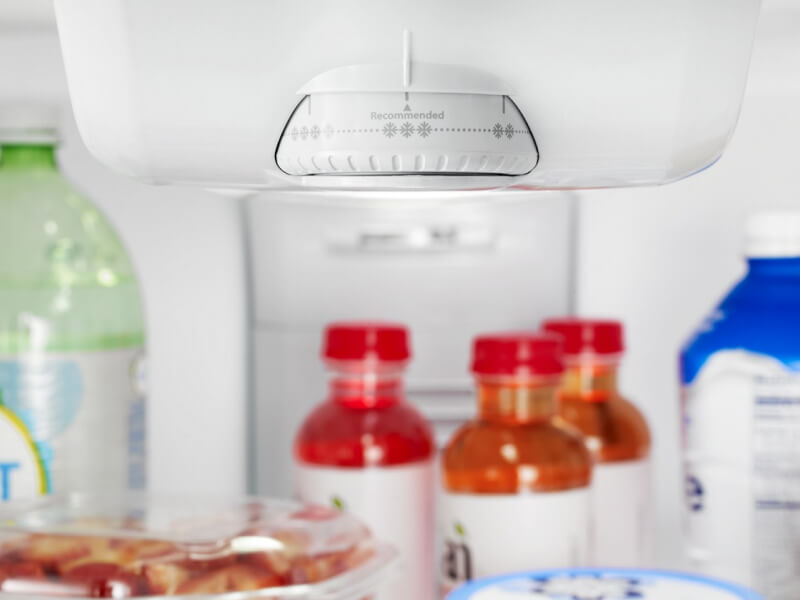
Why is my fridge freezing everything on the warmest setting?
Even if your fridge is set to the warmest setting, any of the factors stated previously in this article can contribute to a temperature imbalance. It’s good practice to check that the internal temperature aligns with the refrigerator setting to help ensure your refrigerator is working properly.
This can be done by using the glass of water method shared above or by placing a thermometer directly in your refrigerator to check the temperature manually. Most modern refrigerators no longer use a thermostat to measure temperature, opting for electronic controls or temperature sensors instead.
If the temperature or temperature sensors aren’t the reasons why your refrigerator is freezing food, go through the checklist shared above to rule out other explanations for why your refrigerator is freezing items, even on the warmest setting.
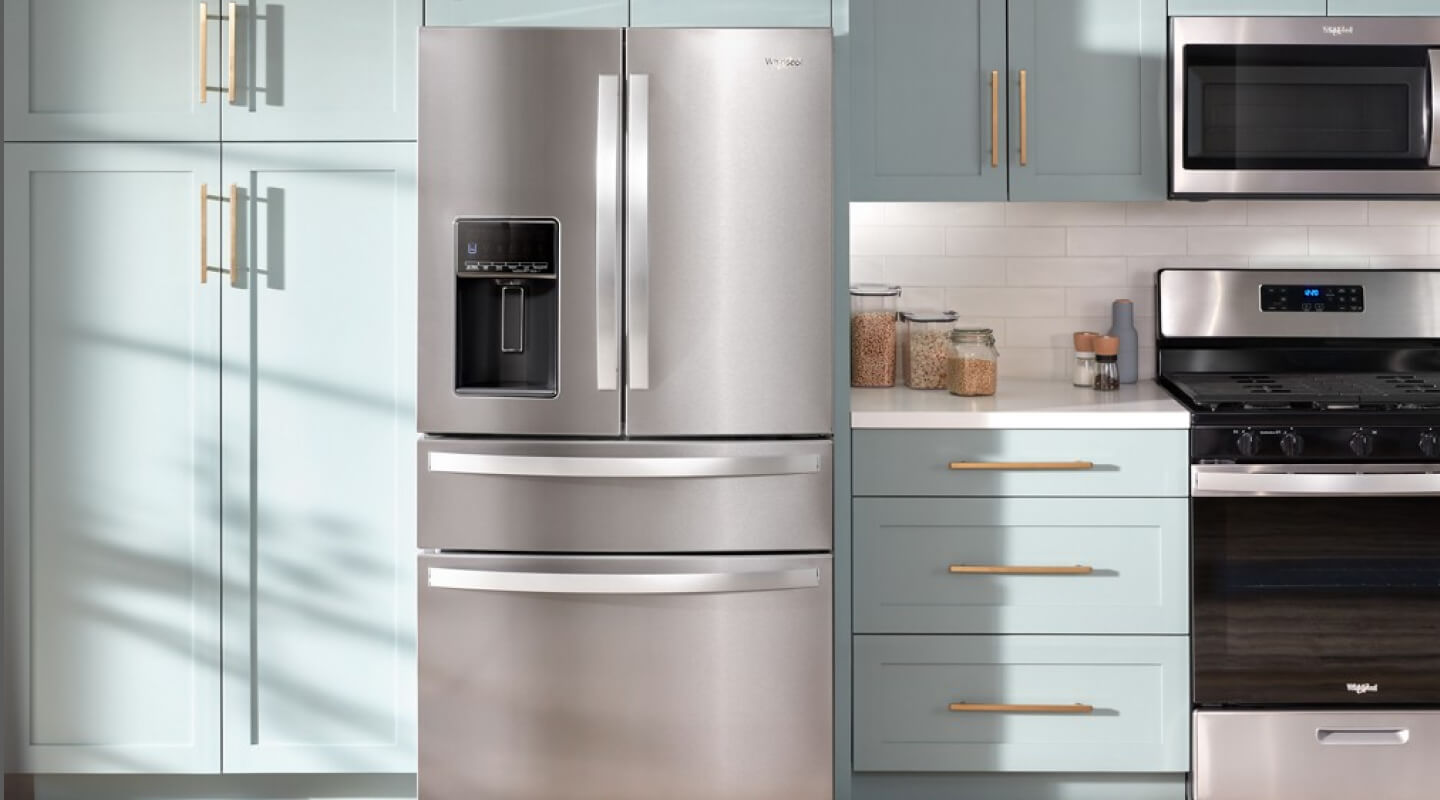

What should I do if my fridge is still freezing food?
If you haven’t had success using the steps above, it may be time to schedule service for your refrigerator so a professional can take a look. If your refrigerator needs to be replaced, this refrigerator buying guide can help you discover the right refrigerator for your kitchen. If you’re having other issues and your fridge isn’t staying cool enough, explore tips within this article to learn how to troubleshoot it.
Explore Whirlpool® Refrigerators
Whirlpool® Refrigerators of all configurations feature purposeful innovations designed with family-focused homes in mind. Find the best fit for your family as you browse French door, side-by-side, bottom freezer and top freezer refrigerators from Whirlpool brand. Looking to improve your kitchen in other ways? Check out these upright freezers and chest freezers today.
Was this article helpful? Pass it on
Learn more about Whirlpool Brand


home heartbeat
Ready for more tips, home hacks and appliance guides?


